Tom's Hardware Verdict
The Beacn Mic and Mix Create are powerful content creation tools but come at a high cost and have more than their fair share of bugs.
Pros
- +
Software is very powerful
- +
Extremely customizable
- +
Customizable mixes are excellent for content creation
- +
Relatively small desk footprint
Cons
- -
Complicated to learn
- -
Software bugs
- -
Expensive
- -
No XLR support
Why you can trust Tom's Hardware
Beacn is a new brand in the world of content creation, but there’s a good chance you’ve seen this team’s work before. The creative minds behind the GoXLR and GoXLR Mini broke off to form Beacn, and today we’re looking at its first products: the $279 Beacn Mic and $199 Mix Create mixer. Made by and for content creators, these products deliver next-level customization and sound crafting. Taken as a pair or individually, they’re evolutionary, and expensive, products that show what’s possible when designers truly listen to the wants and needs of their audience.
Beacn Mic Specs
| Capsule Type | Dynamic |
| Frequency Response | 50Hz - 20kHz |
| Polar Pattern | Unidirectional (Cardioid) |
| Sensitivity | -27dBFS |
| Dynamic Range | 95dB |
| Resolution and Sample Rate | 16/24/32-bit, 48/96kHz (PCM), 32-bit, 48/96kHz (Float) |
| Connectivity | USB Type-C (with Type-A adapter) |
| Adjustable Gain | 0 to +20dB |
| Software | Beacn App |
| Dimensions (LxW) | 8 x 2.1 inches |
| Weight | 1.66 pounds |
Beacn Mix Create Specs
| Lighting | LCD screen, button illumination |
| Controls | 4 knobs, 4 mute buttons, 2 paging buttons, 1 submix button |
| Screen | 5-inch LCD |
| Connectivity | USB Type-A |
| Cable | (Ex: 6 feet, braided) |
| Software | Beacn App |
| Dimensions (LxWxH) | 6.9 x 3.5 x 3.9 inches |
| Weight | 0.58 pounds |
Design of the Beacn Mic and Mix Create
The Beacn Mic takes its inspiration from classic broadcast microphones like the Shure SM7B and updates it with a 2022 sense of style. Available in black or white, its long, cylindrical body is composed half of zinc alloy and half of the foam pop filter hiding the dynamic microphone capsule within. Its two sides are split by a customizable RGB light ring. It’s hardly subtle, but is exactly the kind of accessory that pops on camera and ties nicely with the RGB lighting common in streamers’ setups. Along the sides is a U-bracket that attaches to any standard microphone arm and allows the microphone to tilt to address your mouth.
The microphone includes everything you’ll need except for that arm, and Beacn doesn’t make one (yet). It comes with a long, 11-foot cable that easily routed behind my monitor and into the back of my PC. While that length seems excessive, it makes sense when you consider the different ways it may need to snake around different desks and monitor setups, and still provide easy movement on a boom arm. There’s also a 6.5-foot headphone extension cable intended to route along that arm and plugs into the back of the mic for zero-latency monitoring. You can also just plug headphones in directly if you don’t mind some dangling wires.
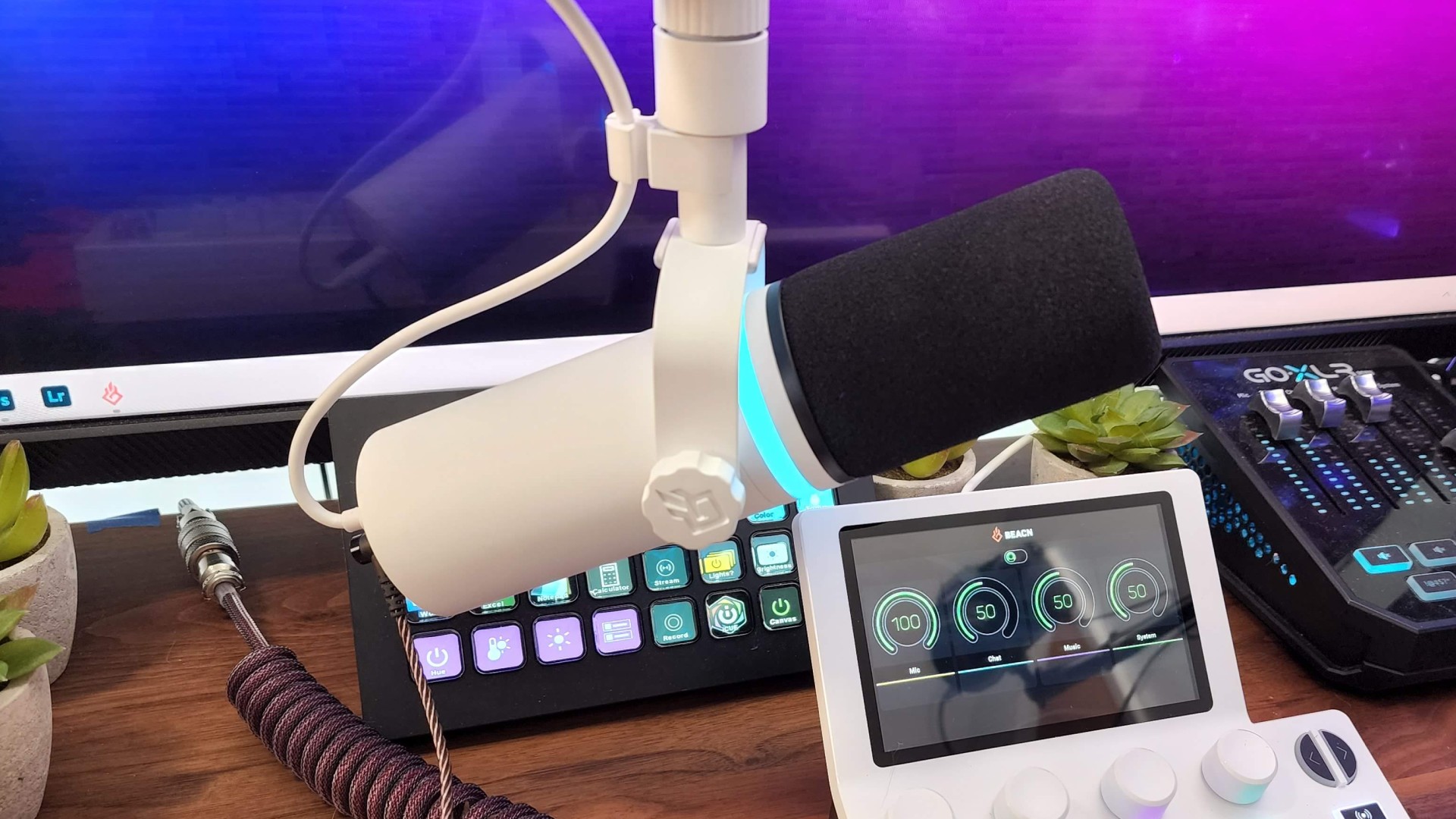
The Beacn Mic is a dynamic microphone, which is still uncommon in the streaming market. They’re a good choice for streamers whose rooms aren’t sound treated or that create content in shared spaces with outside noise. Dynamic capsules are less sensitive than the condenser capsules found in some of the best gaming microphones like the Blue Yeti or HyperX QuadCast, which makes them better at blocking outside noise that would otherwise make its way onto your stream (such as the clack of one of the best gaming keyboards or a noisy case fan). They also have a reduced frequency response compared to condensers, which can make them sound less true to life but an easier match for the “radio voice” many streamers seek.
The magic of the mic has less to do with its capsule and more to do with its built-in processor and accompanying software. The Beacn Mic is a USB microphone, which allows it to utilize an advanced signal processor and handle effects like noise suppression directly on the microphone, saving CPU cycles that might otherwise tax your system. Combined with the Beacn App, it allows you to apply a whole suite of audio effects to completely tailor the sound to your voice and elevate its sound quality.
I’ll talk more about the Beacn App in the next section, but it’s important to understand just how critical it is to the performance of the Mic. The out of the box sound is decent but has ample room for growth — which is exactly where the app comes in. The Beacn App features an advanced equalizer, bass enhancer, noise suppressor, expander, compressor, and more. Each of these effects improves the sound quality the microphone is able to provide. The Mic can be plugged in and used plug-and-play but shouldn’t be. There are better, cheaper microphones if all you want to do is plug in and record.

The Mix Create, on the other hand, is Beacn’s answer to the GoXLR. It’s small, only about seven inches long, and its screen tilts upward allowing it to take up less than four inches of depth. Instead of having physical faders, it displays the levels of each audio channel on its five inch LCD screen and uses knobs to control volume. The screen can display up to four channels at a time, but a pair of paging buttons on the right allow you to navigate to any additional channels you might create.
Get Tom's Hardware's best news and in-depth reviews, straight to your inbox.
All of the audio channels the Mix Create controls are handled through the Beacn App. There are no physical inputs whatsoever. This design means that you can control any audio device connected to your PC, including USB gaming headsets, which is great functionality if you’re not ready to move to a standalone mic.
Using the app, you can assign any audio source to any of the existing channels, or create your own, and then customize independent mixes for your own headphones, your audience, and even a VOD track for archiving videos to Twitch. It’s a powerful piece of hardware and game changing in the same way the GoXLR was when it was released for users used to stock Windows audio and OBS plug-ins.
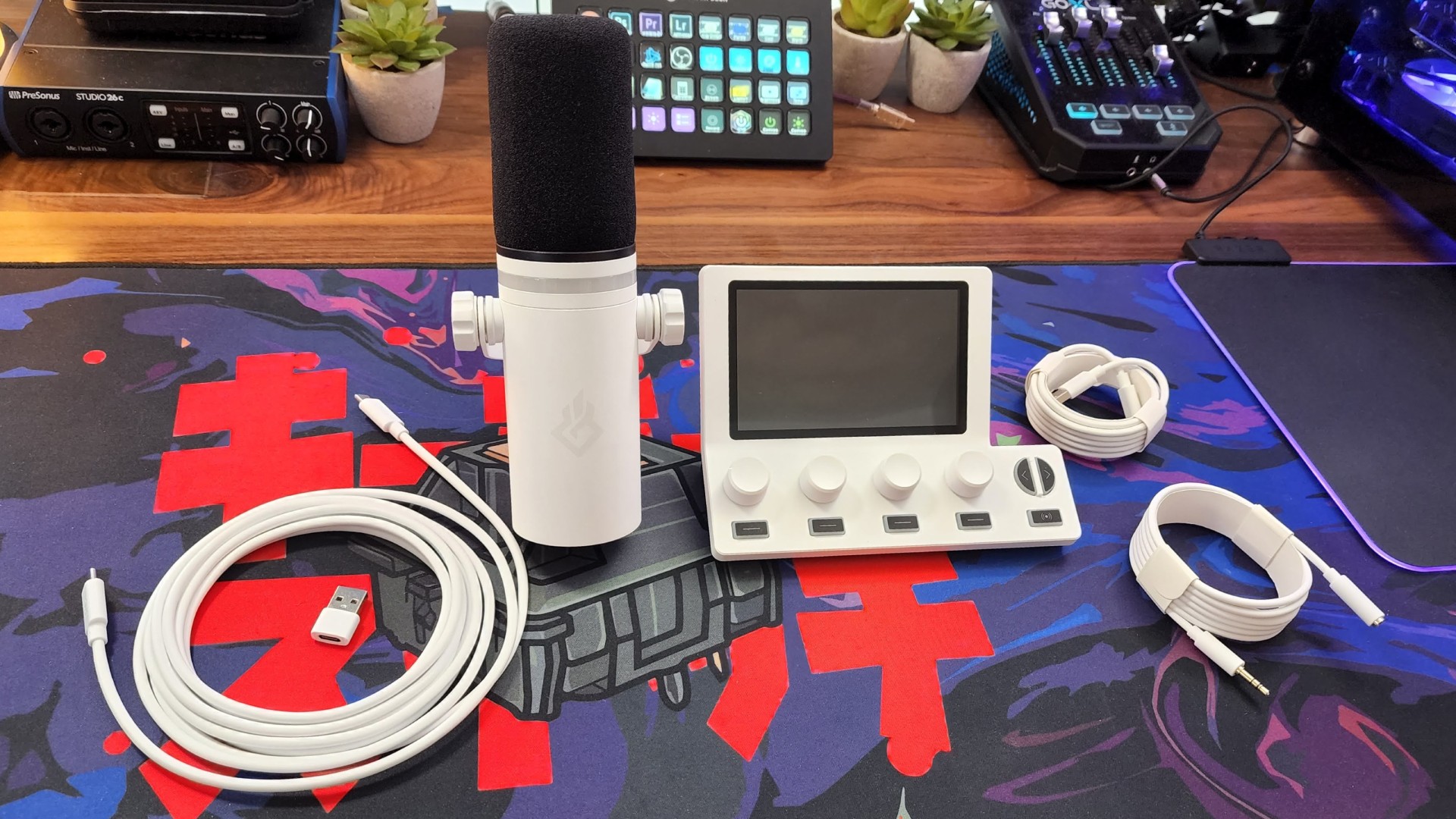
On the other hand, if you already use an XLR microphone, the Mix Create won’t be nudging the GoXLR off your desk anytime soon. That’s disappointing, because in that scenario, the Mix Create isn’t going to save space, it’s going to take up more. The lack of an XLR input is a glaring enough omission that it’s clearly intentional, and I can only hope Beacn releases an XLR model in the future.
Despite that, it’s just as potent of a streaming product as the Beacn Mic is. If you’re not already using a GoXLR and don’t plan to upgrade from a USB mic or gaming headset, it provides an excellent pathway to consolidating your audio control. For content creators, the ability to create personalized audio tracks with separate, physical controls means that you don’t need to Alt+Tab in the middle of a game to make adjustments and can instead be much closer to a producer, who also happens to be the star of the show.
It’s nice enough, in fact, that Beacn also sells a simplified version of this device called the Beacn Mix. This lacks the advanced routing effects and instead focuses purely on advanced volume control. Having physical knobs for different sources is just plain better than clicking around in Windows.
Software for the Beacn Mic and Mix Create
While the out of the box sound of the Beacn Mic is good, but not great, it comes to life when used with the Beacn App. More importantly, the software is required to access all of the features both devices have to offer. It’s quite powerful, and offers some of the best customization options ever seen in a content creation device, but it’s also in active development. New features and updates roll out regularly, but anyone buying these products should be prepared for occasional bugs.
With that in mind, it’s no exaggeration to say that the software is the absolute heart of these products. It is what sets them apart from competing devices like the GoXLR Mini and Razer Audio Mixer. For the mic, the app offers powerful processing and visualization features that make tailoring the sound of your mic approachable in a way that’s just not possible elsewhere.
For the Mix Create, crafting the perfect mixes is more complicated but remains ridiculously customizable and clearly crafted by people who create content themselves.
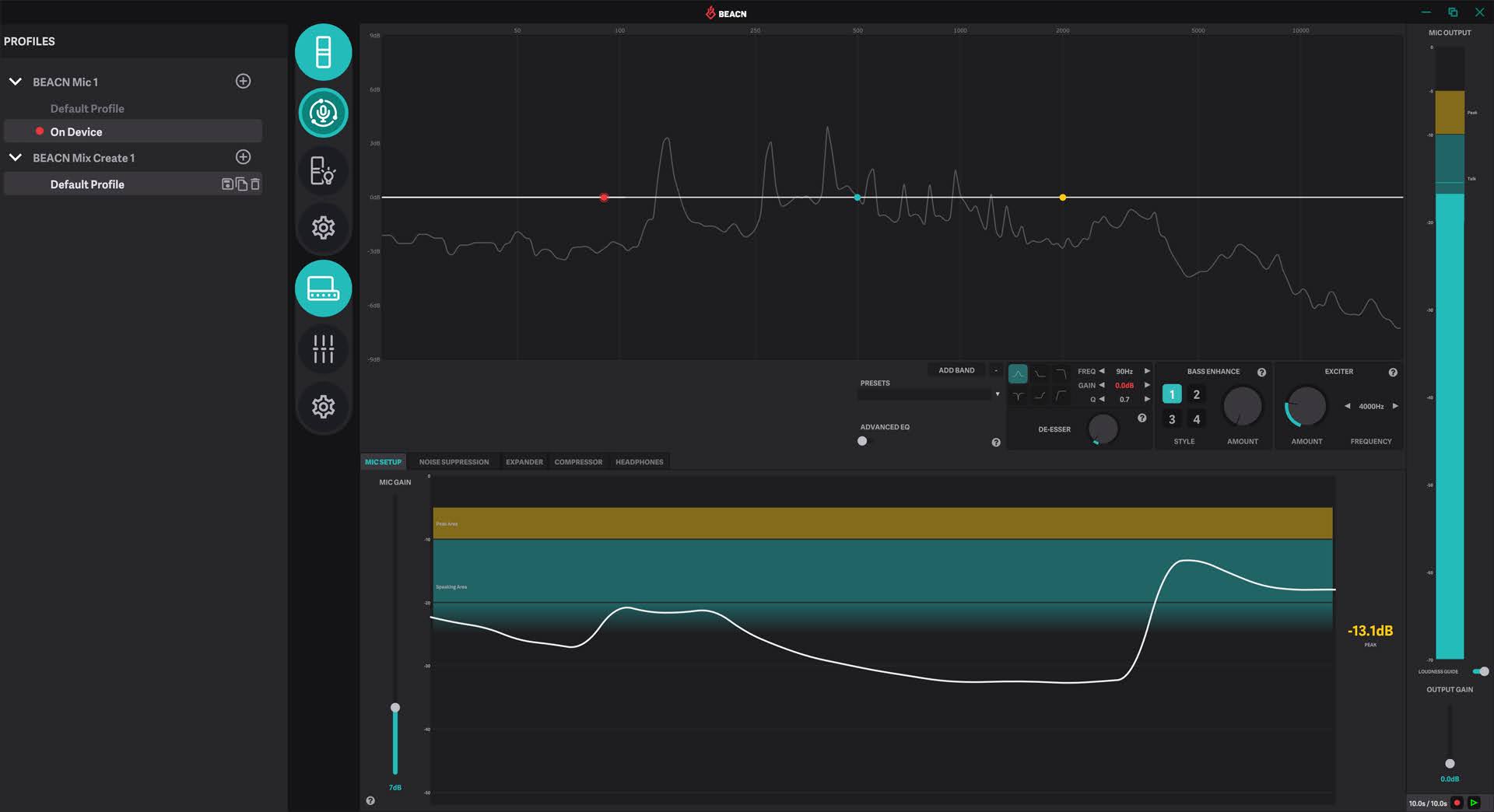
After plugging in the Beacn Mic, a new tab will appear that holds an almost overwhelming amount of options. The top half of the screen displays a real time waveform that reacts to your voice as you’re speaking. The bottom half shows a line level, with a visual guide to let you know when you’re too loud or too quiet. Both of these are important for adding effects and EQ profiles and seeing how each impacts the sound of your voice.
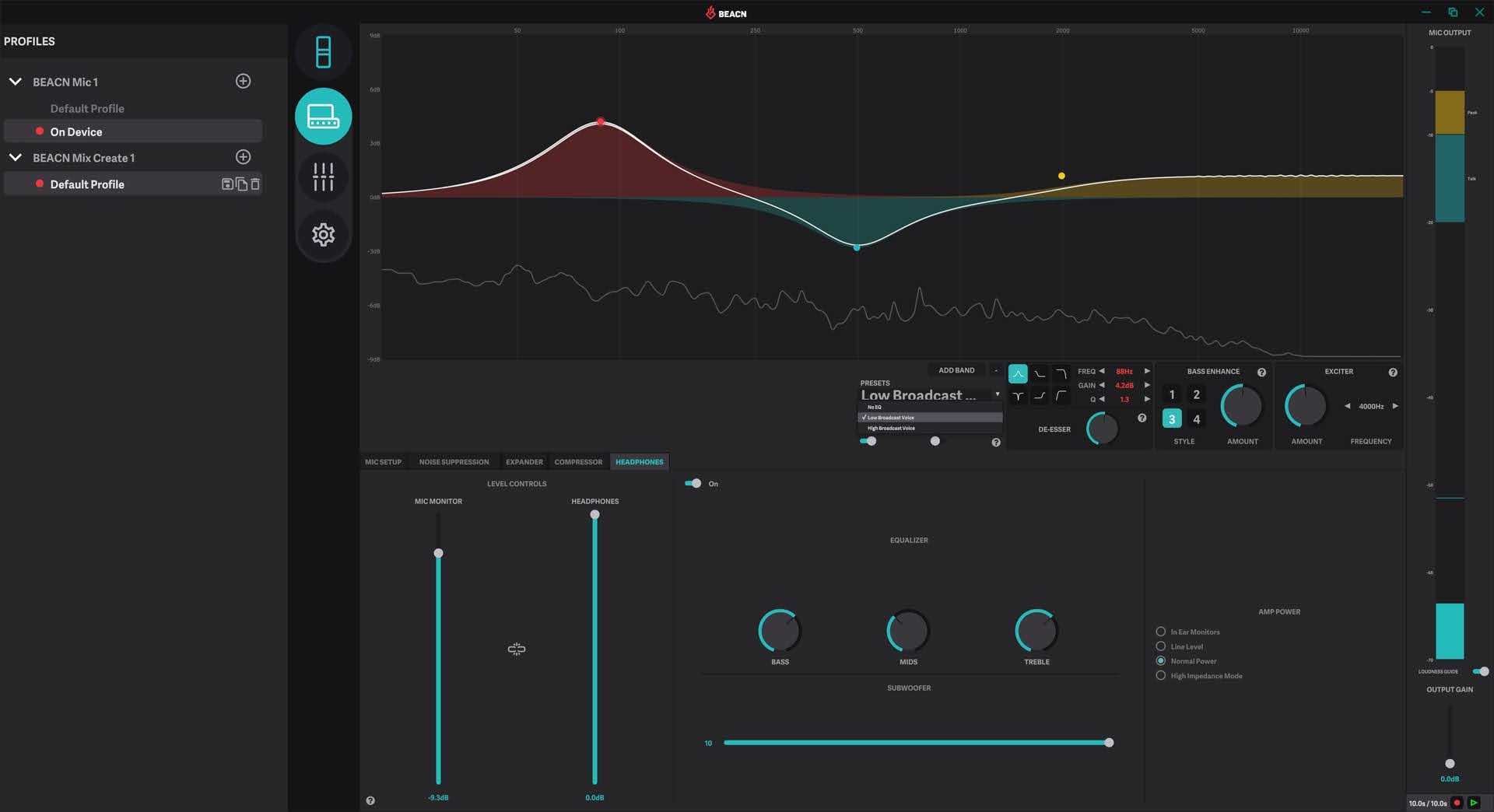
The top half of the screen is dedicated to equalization and tone. The software comes with different presets for “high broadcast” and “low broadcast” but you can also dial in your own custom EQ profile if those aren’t to your liking. Seeing where your voice actually lands on the frequency spectrum takes out the guesswork of tweaking bass, middle, or treble sliders as with the GoXLR. As you’re changing different settings, you can also glance down below to see how it impacts your overall amplitude.
Alongside the EQ presets are three different effects to further dial in your sound: a de-esser, a bass enhancer, and an exciter. The de-esser removes the sharp “s” sounds from the upper end of your voice. The bass enhancer does what it sounds like, but allows you to choose from four different styles that each target slightly different areas and levels of the bass register. The exciter hits the other end of the spectrum and adds crispness to the upper-end, adding clarity to your voice without re-adding the sharpness you just removed with the de-esser.
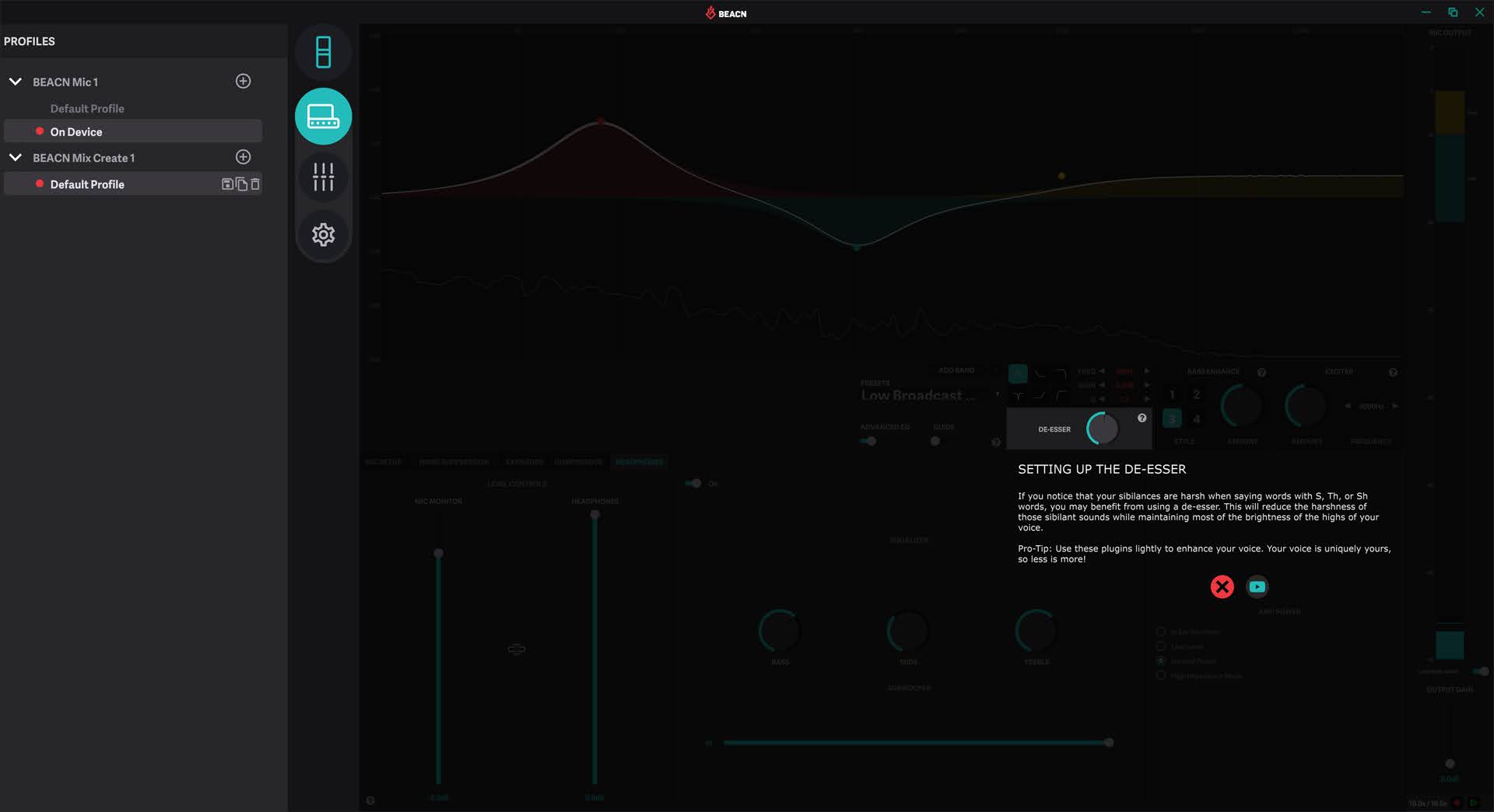
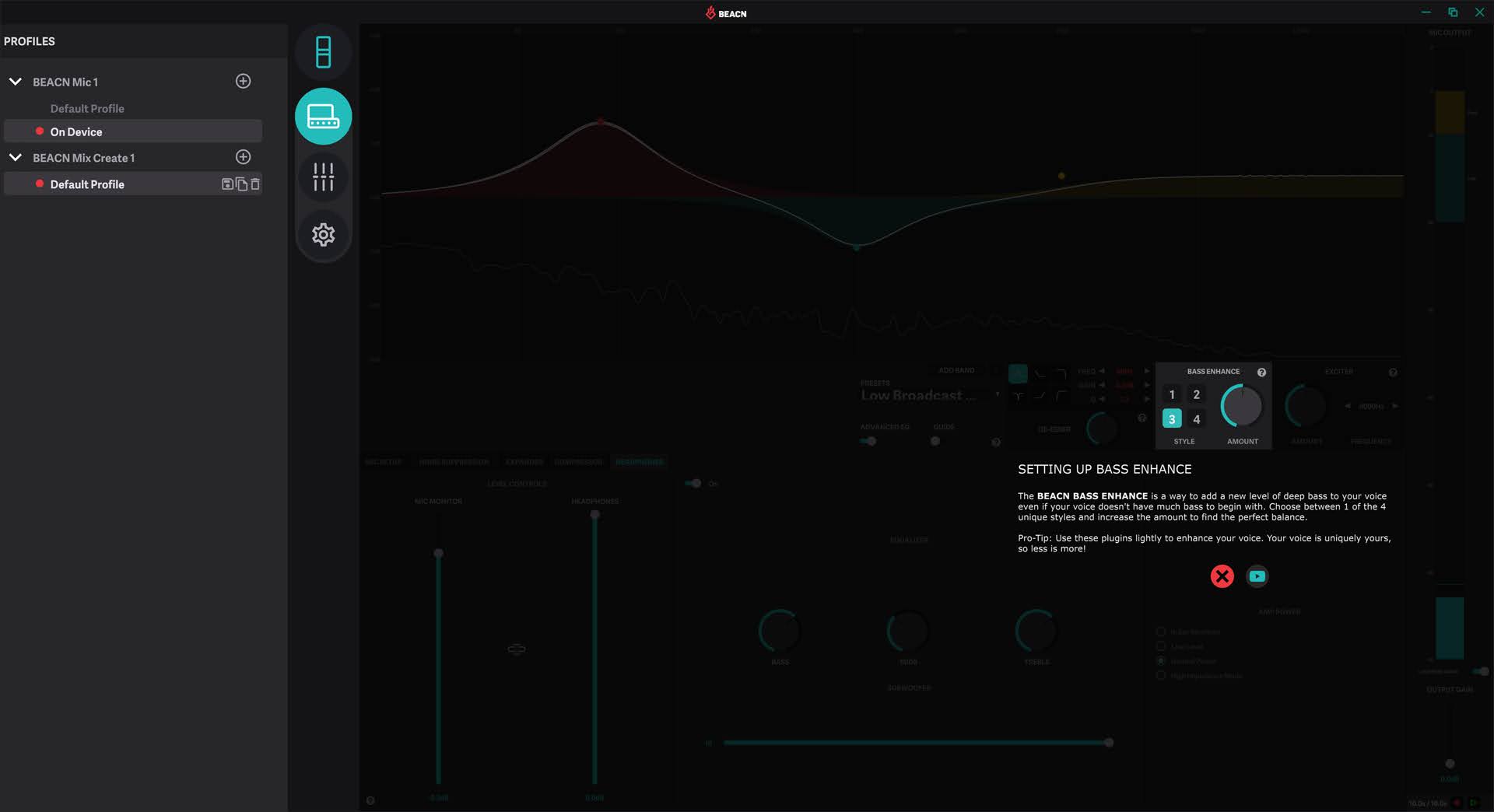
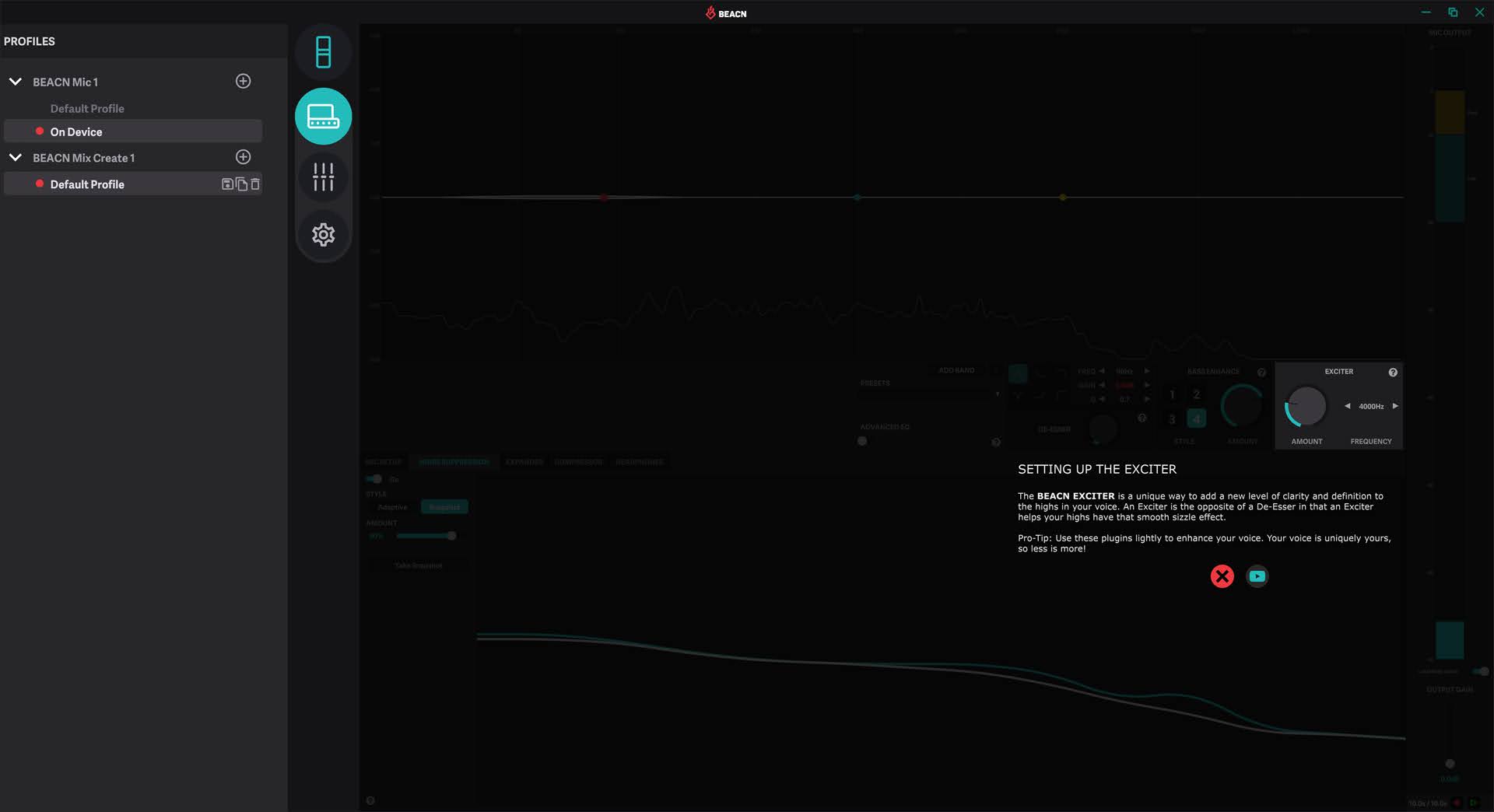
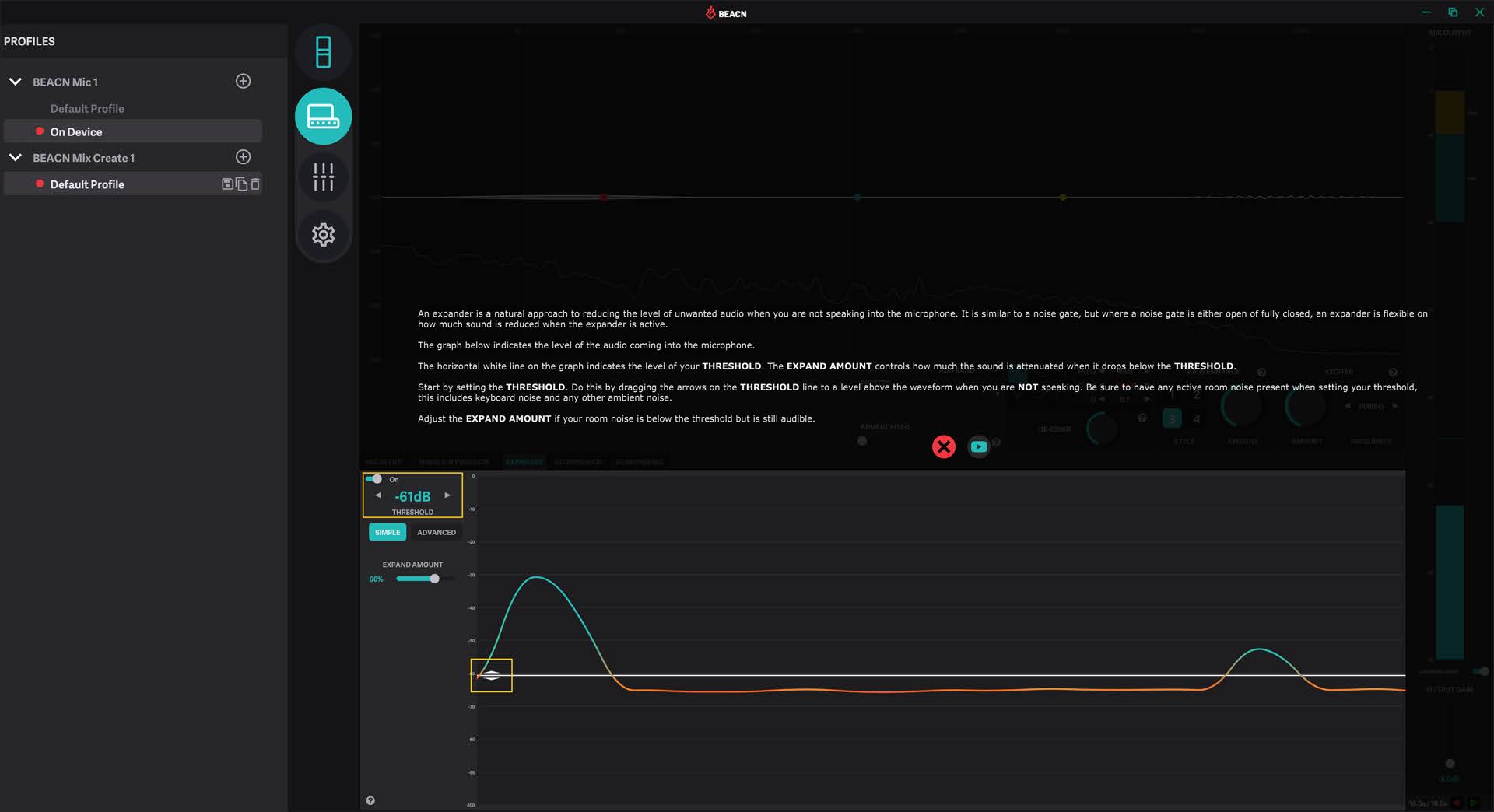
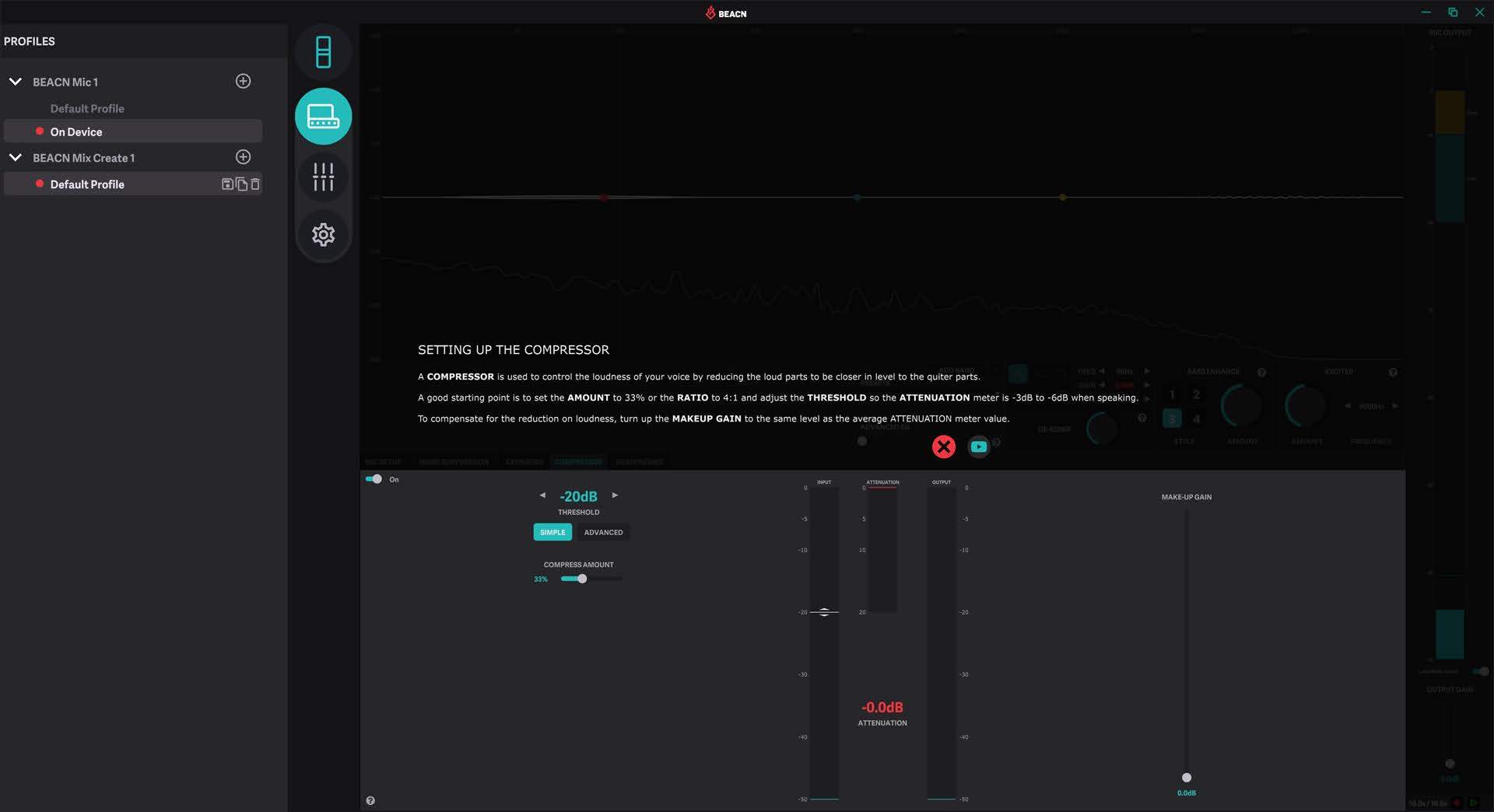
Moving down below, you have even more settings and effects: a noise suppressor, an expander, a compressor, and a tab dedicated to your monitoring headphones. Each of these are staples in the recording world, but with the exception of noise suppression, this could be the first time a content creator might encounter them. Every single one features a detailed tooltip breaking down what they do and exactly how to find the right setting for your environment.
As a guitar player, I can tell you from first-hand experience that audio companies usually do a terrible job of explaining audio effects to newcomers, especially when they’re considered staples of the industry. Beacn doesn’t make any assumptions about its users, and the detailed explanations are incredibly useful. Even as someone who has used these effects, I walked away feeling like I had a better grasp of what they actually did and how to set them up appropriately.
These effects are also key to making the Beacn Mic sound its best. Out of the box, its sound is decent but falls short of the $279 price point in clarity and noise floor. Using the software, you can eliminate any residual noise and bring out the best sound for your individual voice. It’s important enough that anyone not willing to really learn this software should simply avoid the mic. It doesn’t justify its price without it.
While the microphone section of the software is very well explained, the Mix Create software is not. It’s no less powerful, but unless you’re already experienced with a tool like the GoXLR, you’re going to need to watch a setup guide and tutorial. Beacn provides these on its YouTube channel, but there’s a much steeper learning curve than with the Beacn Mic.
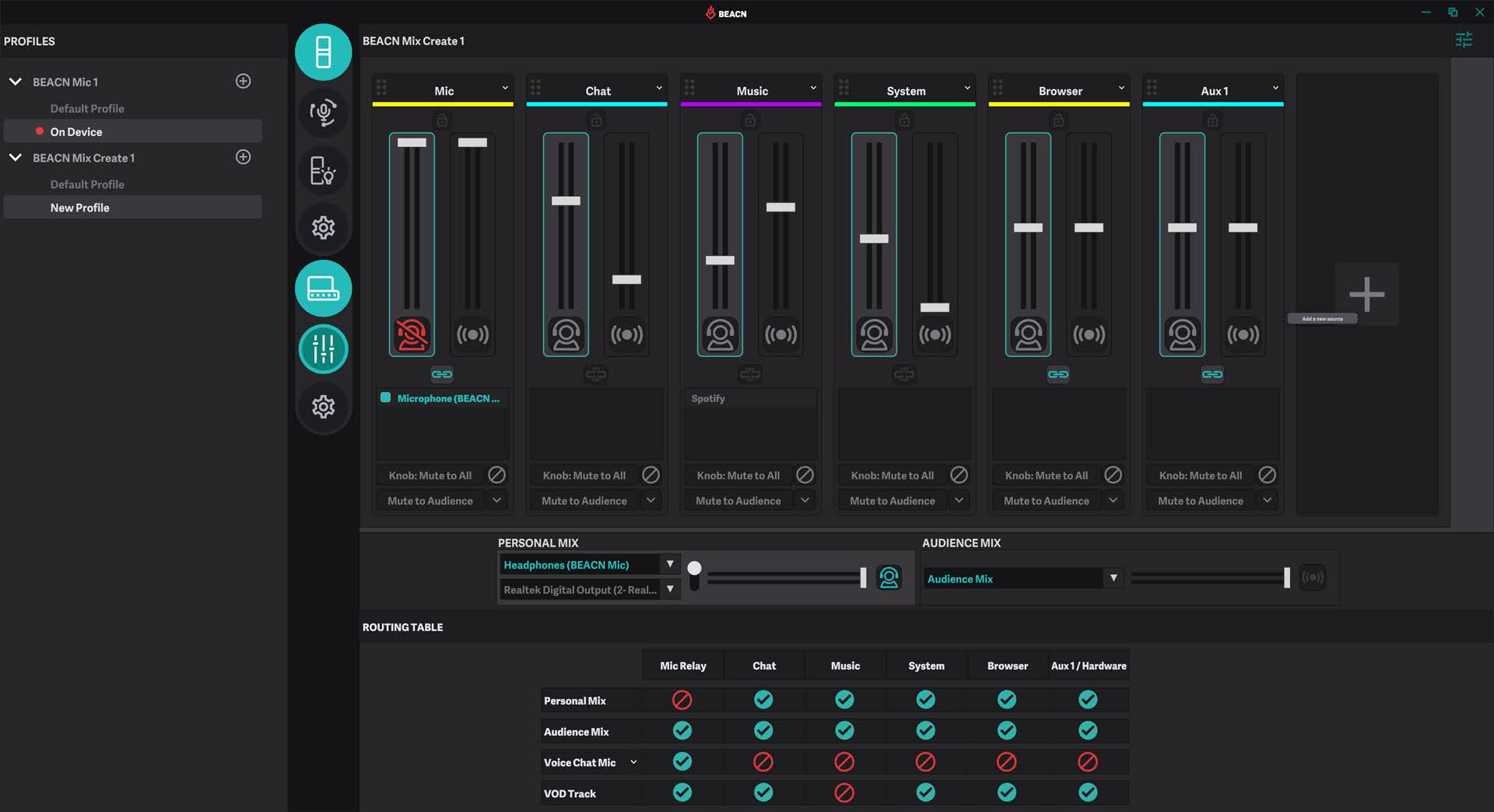
The Mix Create tab takes the form of a virtual mixer and is mirrored on the device’s LCD screen. There are existing tabs for the microphone, chat, music, and system audio feeds. You can also add your own with preset options for common channels like browser audio, hardware audio, or auxiliary line-in. Each channel has a separate volume for your own headphones and what goes out to the audience or the ability to add each independently.
Beneath these are the audio sources assigned to that channel, which is customizable to be able to tie whatever source you like to a given audio feed (separate from your microphone). This allows you to tie a physical fader to a group of audio sources. The volume level for what you hear versus the audience can also be linked or unlinked, so if you want to turn down music and chat at once, or any other combination of sources, you can, either for your headphones or the stream itself.
Below this you have master volumes for personal mixes out to up to two audio sources and the mix your audience hears, but what’s more interesting is the routing table. Here, you’ll find an easy to interpret grid showing which sources are going to each mix, and the ability to turn any of them on or off on the fly. This also includes a VOD track for Twitch, so if you want to play copyrighted music during your livestream, but not risk a strike on the archived video, it’s as easy as clicking a single icon.
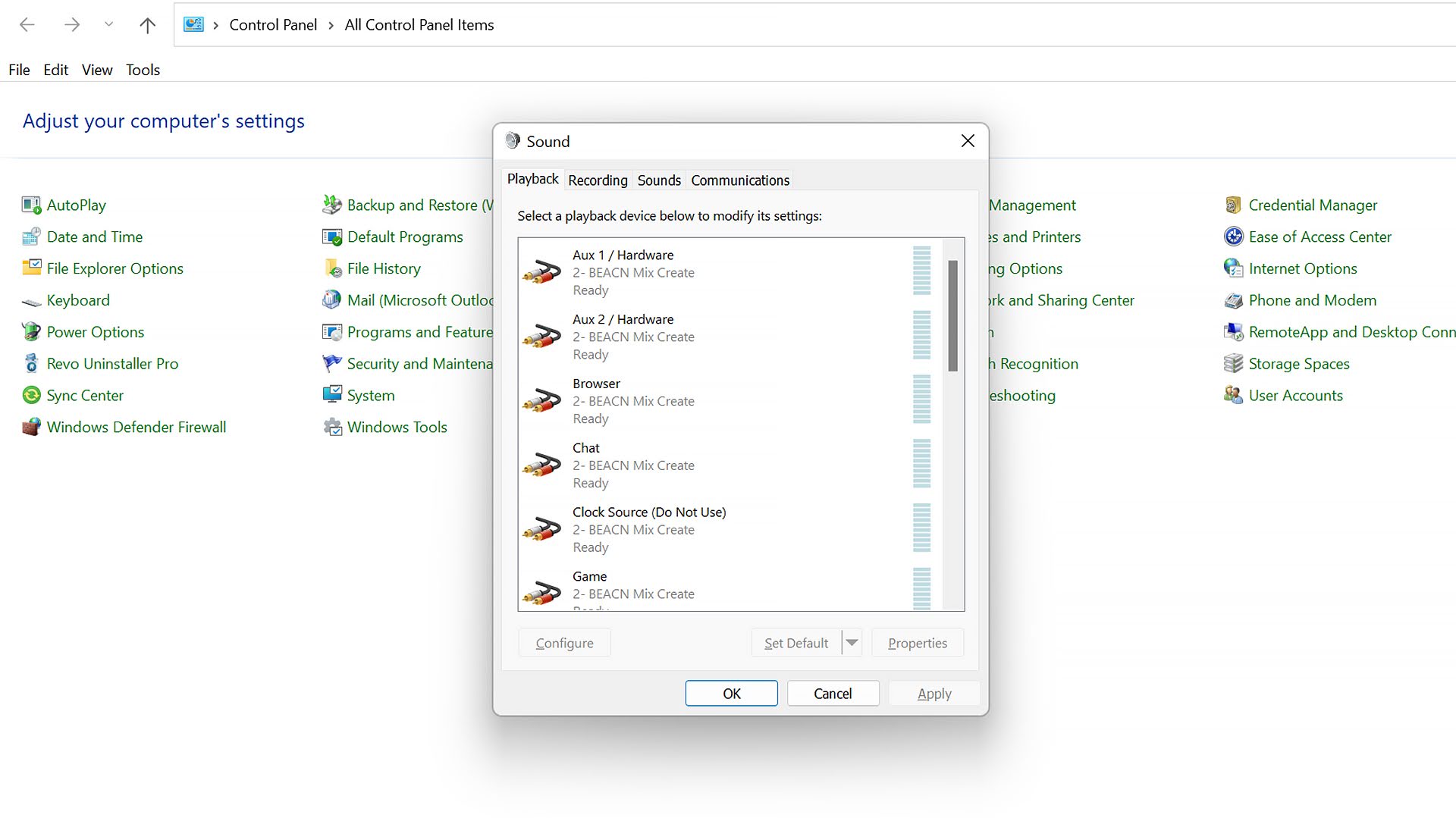
The complicated part comes in assigning and arranging all of these sources and then making sure they all work correctly. You’ll need to visit the Control Panel, sort through the multiple virtual audio sources the Mix Create creates, and select your default audio and communications devices, set your output devices for each app in the Windows sound mixer, and then set and level all of those sources inside the app itself. It’s… a lot. But thankfully, after you do it once, the biggest setup is only done once and then revisited in bite-sized pieces for any other changes you want to make.
The software is what makes these products shine, but it’s also filled with bugs. During my month or so of testing, I found myself having to close and restart it due to intermittent glitches. When it works, any changes you make to the Mix Create reflect in real time on the display, but sometimes those updates wouldn’t apply without restarting the software. Other times, the software would have trouble recalling which channel I had assigned an app to, forcing me to minimize the game and add it to that channel over again. These aren’t gamebreaking issues, but are certainly reflective of an app in progress.
Sound Quality on the Beacn Mic
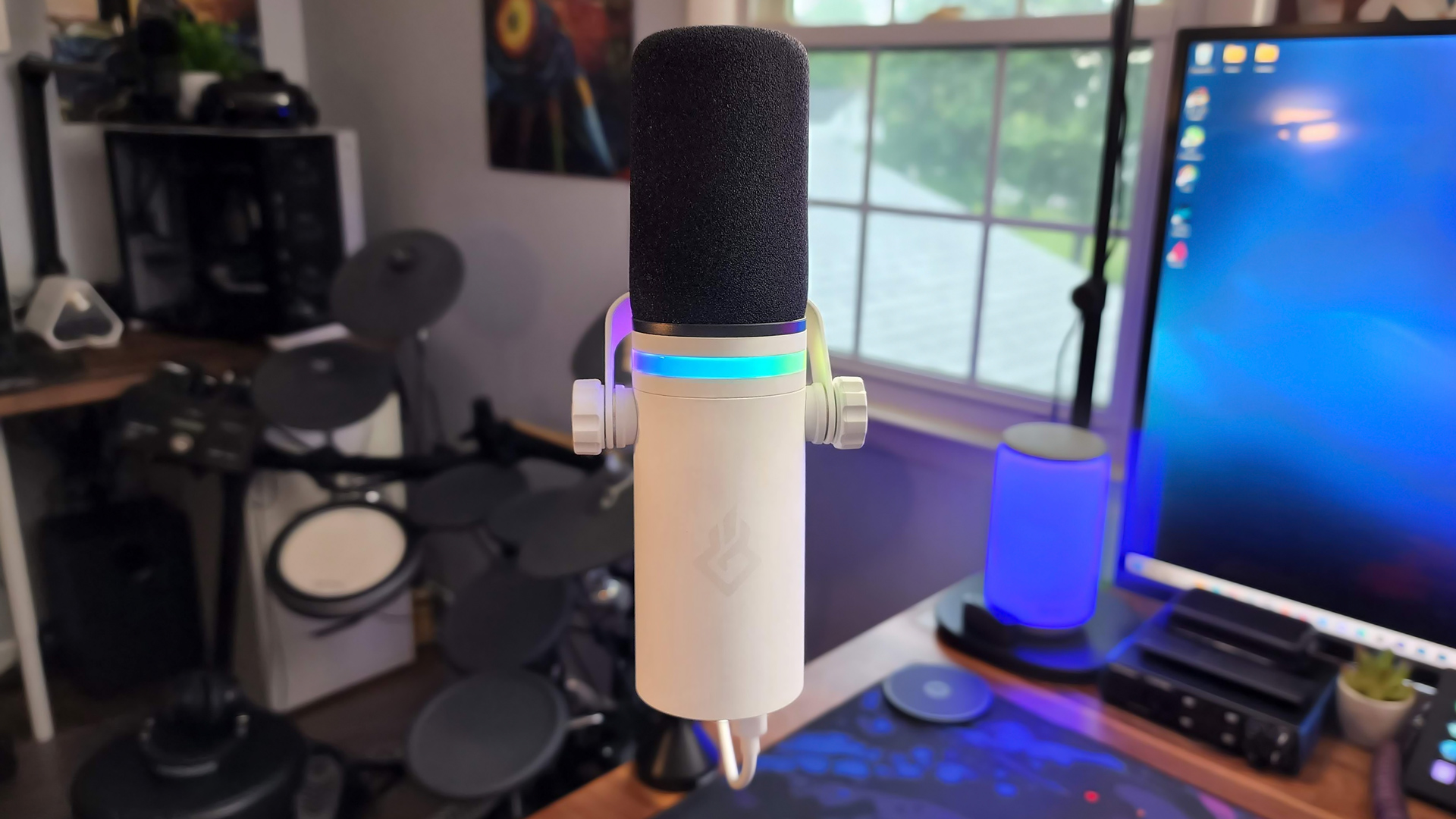
The Beacn Mic is an interesting product because its out-of-the box sound falls short of its high price. But, when it’s customized using the software, many of those shortcomings are alleviated. Usually, mediocre out of the box sound would be a hard pass from me, but since the Beacn Mic is such a package deal with its software, it’s not intended to be used plug-and-play and it is hard to imagine anyone doing so. The combination of its software and onboard processing is the biggest reason to choose the Beacn Mic, so its out of the box sound matters less than it would virtually anywhere else.
With that in mind, that stock sound is only alright. It features the crispness you would expect from a dynamic microphone, but the low-end body falls short, and it sounds compressed and a bit boxy. Off-axis noise rejection is good, as you would expect from a dynamic capsule, and the pop filter does its job well at blocking plosives. Volume levels are also good thanks to its custom-made preamp, but there’s a noticeable amount of white noise at the bottom of recordings that needs to be filtered out. It’s hardly the worst mic I’ve heard, but you would never want to use it this way.
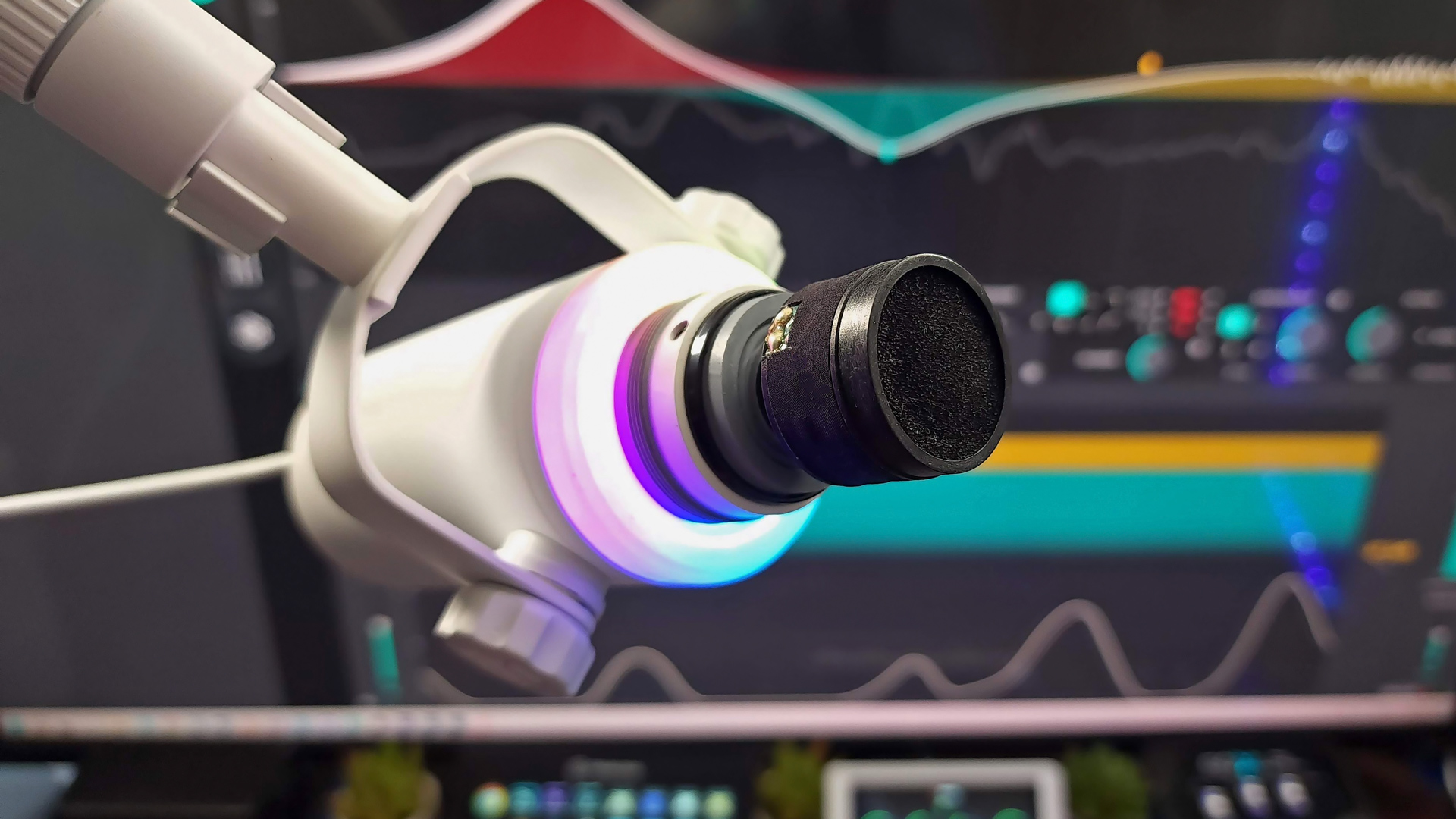
Instead, most users will take advantage of the multiple software options that solve these issues and offer enhancements that can be personalized for your own voice. Using the noise suppressor and expander, that white noise can be completely removed. Adding a custom EQ, applying bass enhancer, and turning on the exciter expand the dynamic range of the microphone, lending body and clarity to your voice. The de-esser effect can round out any sharpness and eliminate sibilance. The compressor then comes in, allowing you to sit further back from the microphone and ensuring that any loud outbursts (like shouting at a lost match) are capped and don’t clip.
The end result is a microphone that sounds quite good and is custom matched to your voice. It doesn’t have the same iconic character as the Shure SM7B or Electro-Voice RE-20, but costs far less and includes effects and amplification that would usually add hundreds of dollars of extra purchases on top of the microphone itself. It’s more than up to the task of streaming and voice over, and just as importantly, delivers a great sense of satisfaction once all of your settings have been dialed in.

Bottom Line
The Beacn Mic and Mix Create are both great choices for content creators, but they come at a high cost and have a handful of important caveats. The lack of XLR support on the Mix Create is disappointing and means it can’t completely replace the GoXLR. The Beacn Mic, on the other hand, is excellent — as long as you take the time to learn and customize its software features to elevate its sound.
No matter how you look at it, these are expensive products aimed at people who crave a higher degree of control than the average user. If you’re shopping for a great USB mic and don’t need such in-depth sound crafting, the MSI Immerse V60 is a great option for only $129. Or, if you’d rather make the jump to XLR and have a mic that can grow alongside your setup, the Neat Microphones King Bee II delivers outstanding sound quality.
If you are that kind of user, however, these products deliver all-in-one solutions for mic’ing and mixing with next level panache. You’ll need to deal with lengthy setup and intermittent software bugs, but both remain impressive examples of what’s possible when developers truly understand the needs of their audience.

Chris is a regular contributor for Tom’s Hardware, covering mechanical keyboards, peripherals, and content creation gear.